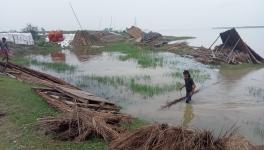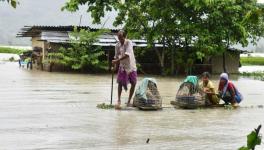A Rough Start to BIMSTEC’s Military Cooperation

According to a report, an official source from Nepal has stated that the country’s decision to forego the Bay of Bengal Initiative for Multi-Sectoral Technical and Economic Cooperation (BIMSTEC) military drills in Pune was not intended to be a snub to India. Instead, the report states that Nepal’s position is not averse to bilateral drills, but requires more deliberation before agreeing to multilateral drills. This statement comes after a lot of speculation that Nepal is moving closer to China by going ahead with the Sagarmatha Friendship-2 joint military exercises in Sichuan, as well as a recently signed transit agreement with China which gives the landlocked country access to Chinese ports. The Nepalese press on the other hand does not seem to have thought much of this, and instead has covered the hurried work in Kathmandu before the BIMSTEC summit as well as focused on the trade aspect of the grouping.
Also read: Learning from History: Renegotiating the India Nepal Treaty
BIMSTEC is a regional grouping comprising of seven countries – Bangladesh, Bhutan, India, Myanmar, Nepal, Sri Lanka and Thailand. The purpose of this grouping was initially geared towards economic and technological development. However, of late, combating terrorism has also been included as an objective. Considering that the South Asian Association for Regional Cooperation (SAARC) has been floundering, one perception that has emerged is that the BIMSTEC is an attempt to create a regional grouping isolating Pakistan. Additionally, both Bhutan and Nepal are landlocked and not connected to the Bay of Bengal.
The recently concluded summit in Kathmandu produced a declaration document that affirmed the grouping’s commitment to: poverty alleviation; transport and communications; trade and investment; counter terrorism and transnational crime; environment and disaster management; climate change; energy; technology; agriculture; fisheries; public health; people-to-people contacts; cultural cooperation; tourism; mountain economy; and blue economy.
In June this year, the Indian Army announced a week long series of joint military exercises in September focusing on counter-terrorism operations comprising of the BIMSTEC member countries. However, barely a few days before the exercises were to begin, on September 8, Nepal announced that it would withdraw from the exercises. Instead, Nepal sent an observer, which Thailand did as well since they too had withdrawn from the exercises. Interestingly, a month before Nepal withdrew, the country had announced that they would be conducting joint drills with China in Sichuan under the banner of Sagarmatha Friendship-2 joint military exercises. A day before Nepal withdrew, on September 7, they concluded the protocol of the Nepal-China Transit Transport Agreement. This would give Nepal access to the sea ports at Tianjin, Shenzhen, Lianygang, and Zhanziang and the land ports at Lhanzin, Lhasa, and Shigatse.
Also read: Foreign Policy: Between Folly and Foibles
Considering that the nearest port at Tianjin is three times the distance from Nepal than Kolkata is, this access may in fact serve more as a back up option. For Nepal, having a back up option is important as the border blockade of September 2015 almost crippled the country. Apart from the artificial shortage of fuel, there was also a shortage of medicines and building materials in the country emerging from the rubble of the earthquake in April. What further exacerbated the situation was the timing of the blockade which occurred during dashain-tihar,the most important festival among all Nepali communities.
The Chief of Army Staff, Bipin Rawat, at the closing ceremony on September 16, without specifically commenting on Nepal’s absence, was reported to have said that countries like Nepal and Bhutan have to be inclined towards India due to geography. Interestingly, an editorial in The Hindu cautioned against such remarks, primarily because “such comments unnerve India’s smaller neighbours and are misleading. Modern technology and connectivity projects could well take away geography’s role as a guarantor of good relations.” The view taken by The Hinduon the Army Chief’s comments can shed light on Nepal’s gradual shift away from India.
Also read: Turning Neighbourhood Into a Troubled Zone
The India Nepal Treaty of Peace and Friendship of 1950 has been undergoing review by a group consisting of eminent persons. The treaty is perceived to be one sided in Nepal and does not represent an agreement between two sovereign states, but rather one between a vassal and a superior. Another issue that may have played a role is India signingthe Communications Compatibility and Security Agreement (COMCASA) with the United States. This agreement is not to be directed against Nepal, but is accepted to be a part of the United States’ containment of China. In this background, the perception in China may have been that the BIMSTEC drills were aimed at them. Thus, in a give and take relationship, Nepal may have been convinced not to participate in the drills. From the Chinese perspective this makes sense, as which country would allow the flow of goods from another country that is a part of a grouping aimed at containing it?
Also read: India Signs COMCASA: Big Risk, Low Returns
However, considering that Nepal has stated that it is not averse to bilateral military exercises, this may indicate that Nepal is open to forging a trilateral relationship with its two neighbours.
Get the latest reports & analysis with people's perspective on Protests, movements & deep analytical videos, discussions of the current affairs in your Telegram app. Subscribe to NewsClick's Telegram channel & get Real-Time updates on stories, as they get published on our website.
























